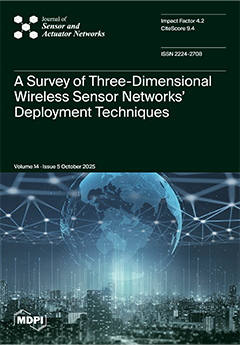Underwater wireless communication (UWC) is an emerging technology crucial for automating marine industries, such as offshore aquaculture and energy production, and military applications. It is a key part of the 6G vision of creating a hyperconnected world for extending connectivity to the underwater
[...] Read more.
Underwater wireless communication (UWC) is an emerging technology crucial for automating marine industries, such as offshore aquaculture and energy production, and military applications. It is a key part of the 6G vision of creating a hyperconnected world for extending connectivity to the underwater environment. Of the three main practicable UWC technologies (acoustic, optical, and radiofrequency), acoustic methods are best for far-reaching links, while optical is best for high-bandwidth communication. Recently, utilizing reconfigurable intelligent surfaces (RISs) has become a hot topic in terrestrial applications, underscoring significant benefits for extending coverage, providing connectivity to blind spots, wireless power transmission, and more. However, the potential for further research works in underwater RIS is vast. Here, for the first time, we conduct an extensive survey of state-of-the-art of RIS and metasurfaces with a focus on underwater applications. Within a holistic perspective, this survey systematically evaluates acoustic, optical, and hybrid RIS, showing that environment-aware channel switching and joint communication architectures could deliver holistic gains over single-domain RIS in the distance–bandwidth trade-off, congestion mitigation, security, and energy efficiency. Additional focus is placed on the current challenges from research and realization perspectives. We discuss recent advances and suggest design considerations for coupling hybrid RIS with optical energy and piezoelectric acoustic energy harvesting, which along with distributed relaying, could realize self-sustainable underwater networks that are highly reliable, long-range, and high throughput. The most impactful future directions seem to be in applying RIS for enhancing underwater links in inhomogeneous environments and overcoming time-varying effects, realizing RIS hardware suitable for the underwater conditions, and achieving simultaneous transmission and reflection (STAR-RIS), and, particularly, in optical links—integrating the latest developments in metasurfaces.
Full article





